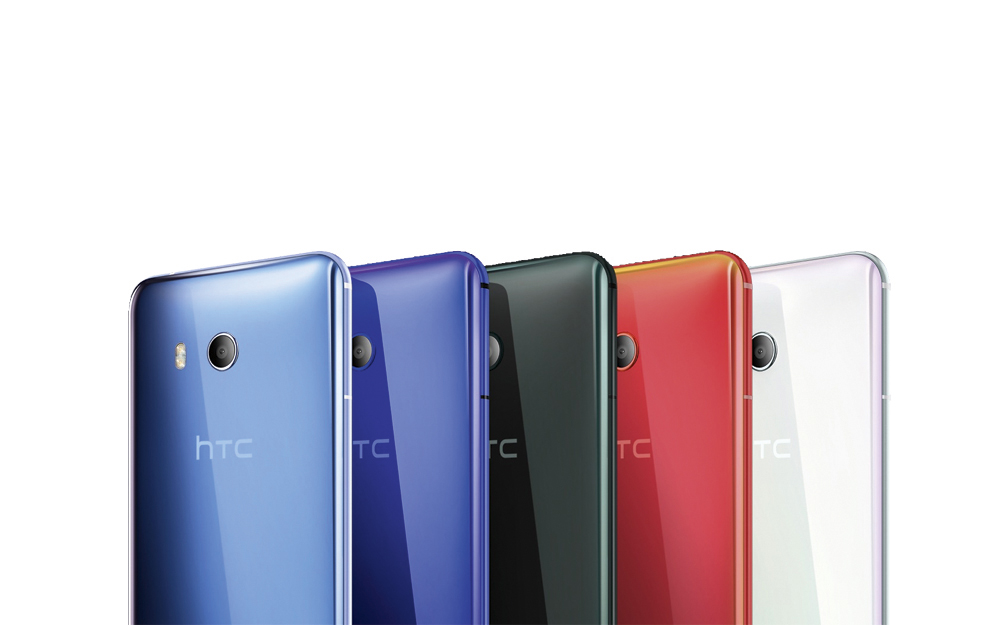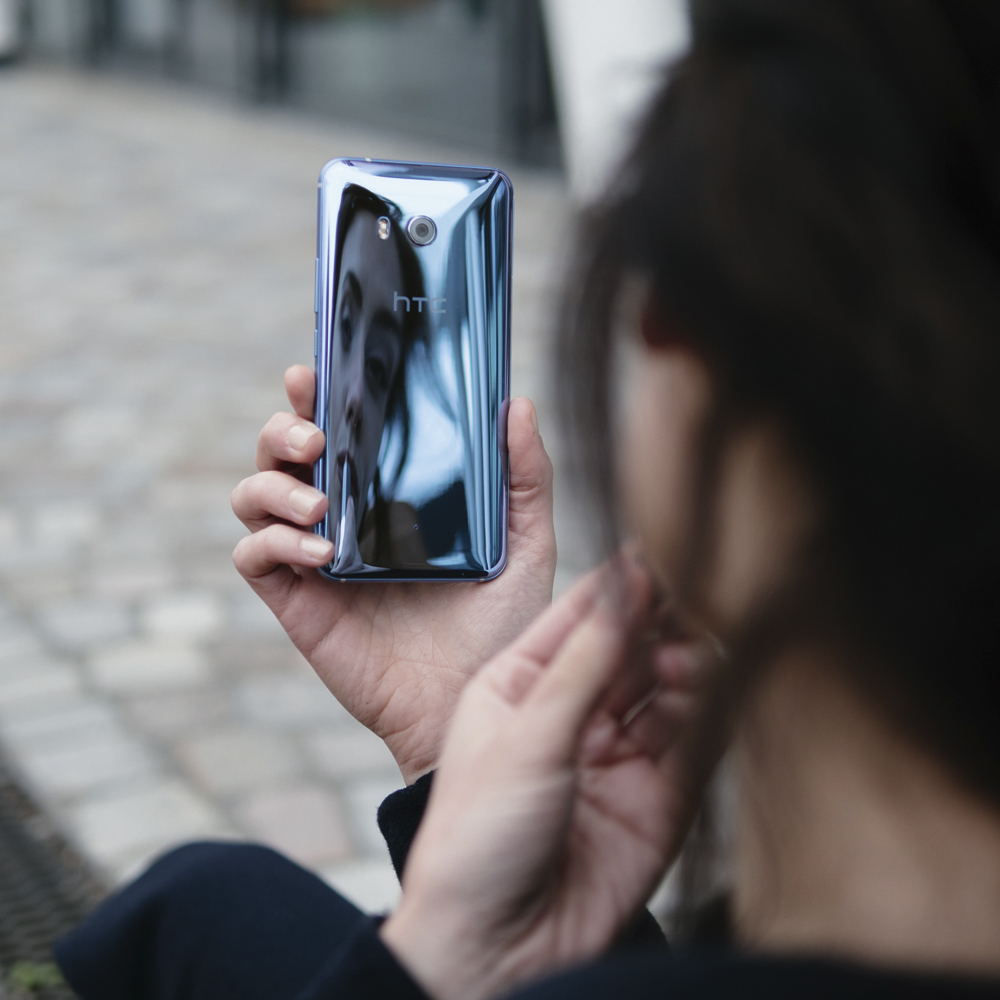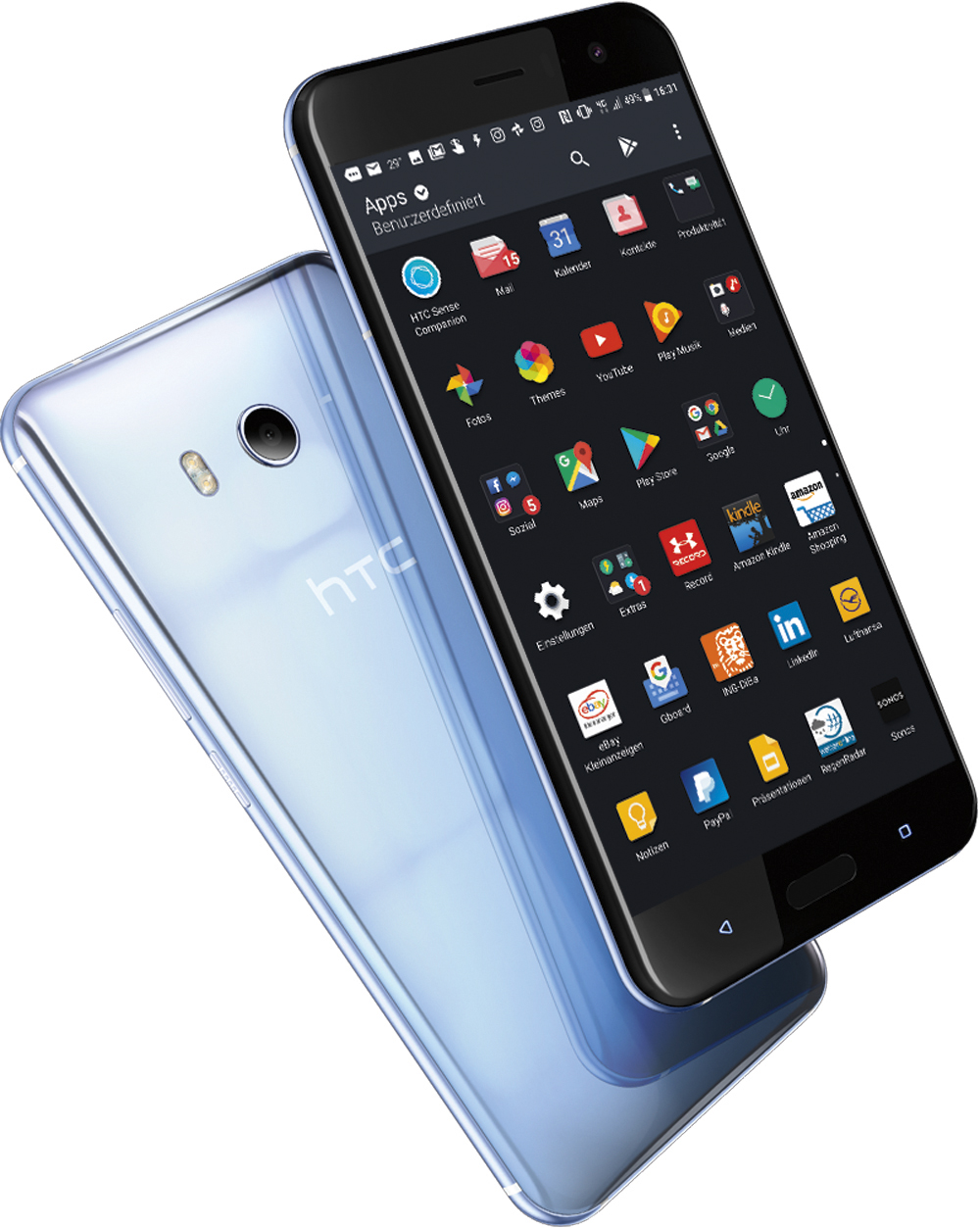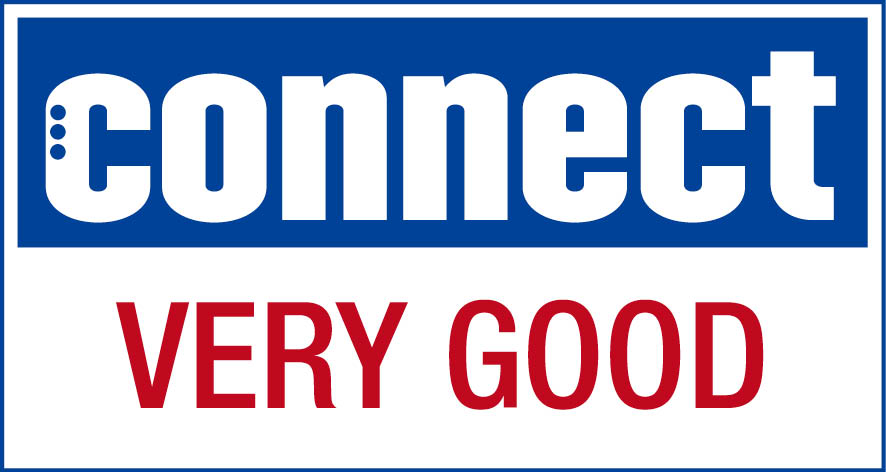HTC reports back with an impressive smartphone. The gleaming beauty could represent the beginning of a comeback, but there’s a catch. The past few years have not been easy for this long-standing company, which had such a decisive influence on the beginnings of the smartphone market.
Even after the rise of Apple and Google it managed to remain an important initiator for innovations. However, a misguided product policy and the competition from emergent Chinese manufacturers like Huawei have left their mark on the company. The year 2017 is meant to change everything: not only is it a double anniversary (HTC was founded in 1997 and 2007 was the production of the first touchscreen smartphone worldwide), but it also marks a product relaunch that is most visible in the fundamentally changed design language.





For years the manufacturer was well-known for its striking metal smartphones. Now it has changed to glass, which gives the devices some special features through the sophisticated manufacturing process. It is made from paper-thin layers that are coloured by evaporated minerals and melded together afterwards. This results in unique reflections of light which develop a special effect in every one of the five case colours. However, the striking reflections are the opposite of subtle and are not for people who like reservation.
That aside, the material is impressive haptically overall as well as being more scratch-resistant than metal, the importance of which in everyday use cannot be underestimated. We used our test device every day for numerous weeks and there was not a scratch to speak of on the body. We should take this opportunity to address the big drawback here: glass is very prone to showing fingerprints, particularly with such a reflective surface. HTC has not included a cleaning cloth and plastic cover in the box for nothing. Nevertheless, the workmanship is excellent with the case being IP67 certified, meaning it will survive a water bath. The smartphone sits well in the hand thanks to the glass being curved around the edges and fluidly going over the aluminium frame, but at 5.5 inches it is just too big to sit perfectly. Not to mention that the glass surface makes it really slippery.
PRO
- Elegant and unique design
- waterproof according to IP67
- High-end earphones with Active Noise Cancellation included
- Clever user Interface with extras like Edge Sense
- Excellent camera with lots of extras
- Dual SIM Option available
CONTRA
- No headphone jack
- Wireless charging (Qi) not supported
Top chipset and camera
The 5.5-inch LCD offers ultra-sharp QHD resolution with an excellent image quality. Both the luminosity and contrast ratio are at a very high level, too. A real beast is hiding underneath in the form of Qualcomm’s Snapdragon 835. The top processor of 2017 is the current state-of-the-art model in the semiconductor industry. It has outstanding performance figures and comprehensive connectivity up to LTE Cat. 15. The chipset easily masters the Android system: all apps run fluidly and quickly on screen. The 4 GB of RAM is totally sufficient and there are no complaints about the internal storage of 64 GB (54 GB free).
This means HTC is competing at eye level with most of the competition, but unfortunately misses out on surpassing them. Huawei offers up 128 GB with the P10 Plus, which is comparable in terms of technology and price. Users can expand this for both models with micro-SD cards.
HTC has gone for a 12-megapixel sensor from Sony for the camera, which, in combination with the high-performance chipset, provides an impressive variety of technical refinements. This includes the fast and precise dual pixel autofocus and “Always-on HDR”.
This means that photos are permanently saved and discarded in the background in active camera preview. Only when the user presses the shutter release are three pictures used from this time slot and summarised into one photo. The video mode is particularly wobble-free thanks to an optical image stabiliser. The acoustic focus offers the option to use the microphone as a directional microphone aimed at a marked object in the camera preview.
Our test shows that there is a difference when there are disruptive surrounding noises compared to a normal video recording, but this difference is not particularly distinct.
More vital is the general camera quality, where the HTC U11 is able to impress in all areas. Resolution and brightness stay amazingly constant across the entire picture, while the powerful optics (f1.7 aperature) manage to capture an impressive amount of detail, even in poor lighting conditions. Together with the Galaxy S8+ and Huawei’s P10 range, HTC forms the current cutting edge of camera quality. There is room for improvement with the user interface though. Compared to the competition, the visual design is not particularly appealing.
Edge sense & companion
The latest Android version 7.1.1 is installed on the HTC U11 and enriched by HTC’s own user interface “Sense”. In addition to a versatile gesture control, this also offers the personal news stream “Blinkfeed”, which bundles together the latest news channels, social networks, and your own calendar into one summary. Both of these are well-known HTC features. What’s new is the pressure-sensitive frame. With the help of numerous sensors embedded in the bottom third of the metal frame, the U11 registers when pressure is put on the sides. That means it is enough to simply grip the smartphone harder to start a new action. The user sets the pressure intensity during the initial setup. You can also configure the actions linked to the pressure. Operating the phone with a squeeze, which HTC calls “Edge Sense”, really impressed us.
The app “Edge Sense Companion” is still to be released in the summer. This app will allow you to configure more complex sequences like “Start Instagram” or “Activate filter xy”. We were less impressed by the personal assitant, “Sense Companion”, which is meant to simplify everyday life with forward-looking tips. For example, if you have an appointment in your calendar for the evening it lets you know that your battery will not last or it informs you about weather conditions that affect your week’s plans. We only received a few tips during the test, which were hardly useful. The Companion still has some learning to do.
Lab results and conclusion
The U11 supports Quick Charge 3.0 and a mains adapter with the corresponding output power is included. For the user this means that the battery is fully charged after an hour and a half.
The battery life comes in at 8:18 hours, putting it at the higher end of the mid-table. We were not big fans of the lack of Qi-standard wireless charging. The glass back provides the ideal technical conditions for this, meaning HTC could have offered an important different feature here. This continues with the wireless capabilities and the acoustics, where the results remain positive, but unremarkable. At least they were able to make a statement elsewhere: the U11 makes HTC the only manufacturer in the high-end segment to offer dual SIM. The second SIM takes the slot for the micro-SD with this option, which means you have to choose. This option is only sold via third parties, while unsurprisingly network providers only offer options with a single SIM.
All in all, HTC was able to make a bang with the U11. The unique design, clever user interface with pressure-sensitive edges, and excellent camera and multimedia features catapult the gleaming smartphone into the connect leader board’s top 10. The striking reflective design is a real double-edged sword though, because this will rule out any consumers who prefer the classic smartphone look.
ANDREAS SEEGER

